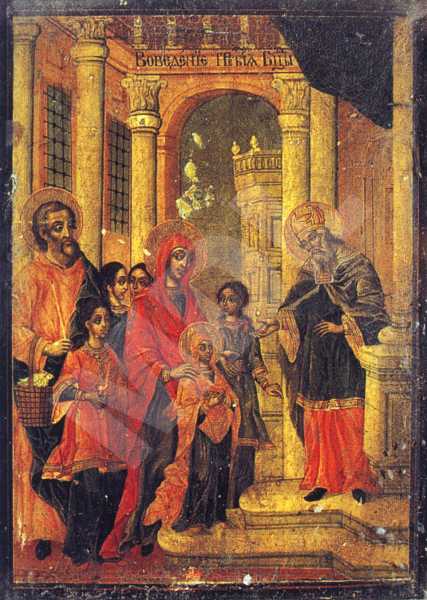The Presentation of the Blessed Virgin
Type:
Icon
Period:
The beginning of the
19 century
Toma Vishanov-Molera, born around 1750, painter of icons and murals, founder of the Bansko school of art. He grew up in the family of the clergyman Vishan. Around 1765 he went to Vienna, where he studied painting. It is not known who were his teachers there or when he returned to Bansko. His fellow villagers called him the Moler, Molera(from German Maler ‘painter’), whence the entire family's surname. Under the influence of the European 18th century art Toma Vishanov painted his works in a new manner, unknown until then in Orthodox art. The figures are realistic, vivid, expressive. Toma Vishanov is an innovator in the early period of Bulgarian Renaissance. His ideas on art were not understood and at first were rejected by his contemporaries. His work has not been studied extensively. He died after 1811 in Bansko.
Dimmensions (cm):
27
/ 22.5
/ 2
Location
Country: Bulgaria
Province: Blagoevgrad
Town: Bansko
Church: St. Trinity
Source
Country: Bulgaria
Province: Blagoevgrad
Town: Bansko
Church: St. Trinity
Description
A traditional iconographic composition, treating this theme. In the center of the pictorial field is the young Holy Virgin. On the left-hand side, behind her, is Saint Anne, with her hands on the shoulders of her daughter. Painted are also a number of girls, friends of hers. Included in the group is also the righteous Johachim, carrying a basket with the birds, the customary gift for the temple at such an event. On the right-hand side, standing on the steps to the temple, is the highpriest John, welcoming the Holy Virgin. The scene is set against the background of a richly decorated temple in the Baroque style.
Iconographical technique: Combined
With velaturas. The "wet into wet" method has been used in the carnation of the faces. The varnish cover is applied thickly and evenly. The gilding on the aureoles and on the enclosing frame is with gold-leaf.
Base material: Wood
The icon's base is a one-piece softwood panel, with two reinforcing beams. The ground coat is of plaster, laid thinly.
State, restoration traces and comments
There are damages in the layer of the painting in the area of the head of the Holy Mother of God, on the vestments of the high priest, in the upper left corner and in the lower end of the frame, enclosing the icon. There are no traces of any previous restorative intervention. The icon is kept in a specially-made glass frame.


